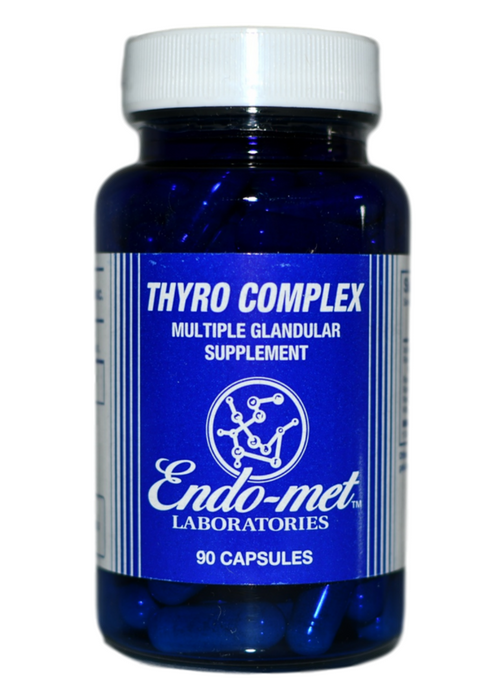Make Your Food Safer With Ozone Therapy
Thyroid Supplements To Get Going Again!
Are you feeling chronically exhausted? Do you find yourself sleeping more than you want, yet still waking up feeling tired? Are weight struggles, mood swings, or brain fog becoming part of your daily life? If your thyroid health is compromised or you’ve been diagnosed with a thyroid disorder, you’re not alone—and help is available through natural, supportive supplements like Endo-met Thyro Complex capsules.
In this comprehensive guide, we delve into the vital role of the thyroid gland, how to recognize the signs of imbalance, conventional versus natural support methods, and why Endo-met Thyro Complex could be the key to restoring your vitality and well-being. If you’re ready to support your body’s natural functions, this article will empower you with the knowledge you need.
The Crucial Role of the Thyroid Gland in Your Body
The thyroid gland is a small, butterfly-shaped organ located at the base of your neck, just below your larynx. Despite its relatively small size, it exerts a powerful influence over your entire body. Its primary function is to produce hormones—mainly T4 (thyroxine) and T3 (triiodothyronine)—which regulate your metabolism, energy levels, growth, development, and overall hormonal balance.
Think of the thyroid as the body’s metabolic engine. It influences how efficiently your body burns calories, how your brain functions, your mood, sleep quality, body temperature, and even your heart rate. When the thyroid is functioning optimally, you feel energized, focused, and balanced.
How Does the Thyroid Work?
The process begins in the brain with the hypothalamus releasing TRH (Thyrotropin-releasing hormone), which prompts the pituitary gland to produce TSH (Thyroid-stimulating hormone). TSH then stimulates the thyroid gland to produce T4 and T3. These hormones are then converted into their active forms and circulate throughout your body, instructing cells to regulate energy production, temperature, and metabolism.
When everything functions correctly, this delicate system maintains harmony. However, various factors—diet, stress, environmental toxins, nutritional deficiencies, autoimmune disorders, or genetic predispositions—can disrupt this balance, leading to hypothyroidism (underactive thyroid) or hyperthyroidism (overactive thyroid).
Recognizing the Signs and Symptoms of Thyroid Imbalance
Thyroid problems often develop gradually, with symptoms that may be subtle or mistaken for other conditions. Recognizing these signs early can help you seek proper treatment and support.
Common Symptoms of Hypothyroidism (Low Thyroid Function):
- Chronic fatigue and low energy levels
- Weight gain or difficulty losing weight despite diet and exercise
- Feeling cold or cold intolerance
- Dry skin and hair thinning or brittle hair
- Constipation
- Depression, mood swings, or mental fog
- Slow heart rate
- Hoarseness
- Muscle weakness or joint pain
- Puffy face
- Elevated blood cholesterol levels
- Elevated TSH in blood tests
Symptoms of Hyperthyroidism (Overactive Thyroid):
- Nervousness or anxiety
- Rapid heartbeat or palpitations
- Weight loss despite increased appetite
- Sweating and heat intolerance
- Tremors in hands
- Insomnia
- Muscle weakness
- Enlarged thyroid gland (goiter)
- Eye protrusion (in Graves’ disease)
Why It Matters
If you experience several of these symptoms, especially persistent fatigue, weight issues, or mood changes, it’s important to consult a healthcare professional for proper testing. Blood tests measuring TSH, T3, T4, and thyroid antibodies can help diagnose the specific condition.
Conventional Treatment Options and Their Limitations
Standard treatments for thyroid disorders typically involve hormone replacement therapy—such as levothyroxine for hypothyroidism or anti-thyroid medications for hyperthyroidism. While these medications can be effective in managing symptoms, they often don’t address underlying deficiencies or support the health of the gland itself.
Moreover, some individuals experience side effects, dependency, or fluctuations in hormone levels. This has led many to explore complementary or alternative approaches—particularly nutritional support and glandular therapy—that aim to restore natural thyroid function.
The Power of Natural Support: Why Consider Thyroid Supplements?
Supplements designed to support thyroid health focus on providing nutrients, tissues, and herbal compounds that naturally enhance glandular function and metabolic balance. These approaches can:
- Support healthy hormone production
- Nourish and regenerate thyroid tissue
- Balance immune responses (important in autoimmune thyroid conditions like Hashimoto’s thyroiditis or Graves’ disease)
- Improve energy, mood, and mental clarity
- Assist in detoxification and reduce inflammation
Key Nutrients for Thyroid Support
- Iodine: Essential for thyroid hormone synthesis. Deficiency can impair hormone production.
- Selenium: Supports conversion of T4 to T3 and protects the thyroid from oxidative stress.
- Zinc: Necessary for hormone synthesis and immune health.
- Vitamin D: Modulates immune function, often deficient in autoimmune thyroid disease.
- B-vitamins: Aid in energy production and stress management.
- Iron: Vital for thyroid hormone synthesis; deficiency can impair function.
While these nutrients are vital, some individuals benefit from more direct support to the gland itself—this is where glandular therapy and specially formulated supplements come into play.
Introducing Endo-met Thyro Complex Capsules
Endo-met Thyro Complex capsules is a natural, hormone-free glandular supplement specifically designed to support the thyroid and overall endocrine health. Its formulation is based on low-temperature, freeze-dried glandular tissue, which preserves vital bioactive compounds that nourish and support glandular tissues.
What Makes Endo-met Thyro Complex Unique?
- Hormone-Free: Unlike synthetic hormone replacements, this supplement supports your gland’s natural function without adding hormones externally.
- Glandular Tissue Support: Contains tissue from healthy animals processed to retain bioactive peptides, enzymes, and nutrients beneficial for glandular regeneration.
- Low-Temperature Freeze-Dried Preparation: Ensures the integrity of delicate bio-molecules, maximizing potency and effectiveness.
- Supports Multiple Glands: While primarily targeting the thyroid, it can also support adrenal and other endocrine tissues, promoting overall hormonal balance.
How Does It Help?
This supplement provides your body with the raw materials it needs to rebuild and energize your thyroid tissue. Over time, users often report improvements in energy, mood, sleep, and metabolic function. It may also help reduce symptoms associated with hypothyroidism, such as fatigue, weight gain, and mental fog.
Scientific Rationale Behind Glandular Therapy
Glandular extracts have been used for decades in holistic and naturopathic medicine. They work by supplying tissues rich in peptides, enzymes, and nutrients that can stimulate the body's innate ability to repair and regenerate glandular tissue. This approach is especially appealing for individuals seeking a natural, supportive method rather than hormone replacement.
Who Can Benefit from Endo-met Thyro Complex?
- Individuals diagnosed with hypothyroidism or low thyroid function
- Those experiencing fatigue, brain fog, or weight gain
- People wanting a natural, hormone-free support option
- Those with autoimmune conditions affecting the thyroid (Hashimoto’s, Graves’) seeking to support immune health
- Anyone looking to optimize overall endocrine health and vitality
Usage and Dosage
Most practitioners recommend starting with 1 capsules daily, preferably with meals. Depending on individual response and specific needs, the dosage can be adjusted under professional guidance. Consistent use over several months often yields the best results, as glandular tissue regeneration takes time.
Why Choose Hormone-Free Glandular Support?
Many thyroid supplements contain synthetic hormones, concentrated extracts, or hormone-mimicking compounds. While these may provide quick symptom relief, they don’t support the underlying tissue health and can sometimes cause hormonal imbalances or dependency.
Endo-met Thyro Complex capsules offers a natural, hormone-free alternative that works harmoniously with your body’s own regulatory systems. It’s especially suitable for those who prefer a holistic, gentle approach to restoring thyroid and endocrine health.

Incorporating Endo-met Thyro Complex Into Your Daily Routine
Best Practices
- Take 1 capsules daily, with meals, or as directed by a healthcare professional
- Maintain a balanced diet rich in iodine, selenium, zinc, and other nutrients
- Support overall health with stress management, adequate sleep, and regular exercise
- Undergo regular thyroid testing to monitor progress
- Combine with other supportive measures such as detoxification, herbal support, and lifestyle adjustments
Patience Is Key
Thyroid tissue regeneration and hormonal balance restoration can take time—often several months. Consistent use, combined with professional guidance, can lead to significant improvements in energy, mood, and metabolic health.
Additional Support Strategies for Optimal Thyroid Health
- Nutritional optimization: Ensure adequate intake of iodine (seaweed, seafood), selenium (Brazil nuts, eggs), zinc (meat, legumes), and vitamin D (sun exposure, supplements).
- Stress reduction: Chronic stress impairs thyroid function through elevated cortisol levels. Practice meditation, yoga, or deep breathing.
- Avoid environmental toxins: Reduce exposure to heavy metals, pesticides, and endocrine-disrupting chemicals that can impair glandular health.
- Regular medical check-ups: Monitor thyroid function and autoimmune markers periodically.
The Holistic Approach to Thyroid Wellness
Addressing thyroid health involves more than just supplements. It requires a comprehensive approach that includes proper nutrition, lifestyle modifications, detoxification, and medical oversight. With the right support, many individuals experience renewed energy, improved mood, stable weight, and a better quality of life.
Remember: Restoring thyroid function is a gradual process, but with patience and the right tools—like Endo-met Thyro Complex capsules—you’re giving your body the best chance to heal and thrive naturally.
Final Thoughts: Reclaim Your Vitality
If you’ve been feeling run down, sluggish, or frustrated by weight and energy issues, it’s time to consider natural support options. Endo-met Thyro Complex 90 or 180 capsules offer a safe, effective, hormone-free way to support your thyroid and endocrine health. Whether you’re dealing with diagnosed thyroid issues or simply want to optimize your metabolic function, this supplement can be a vital part of your wellness journey.
